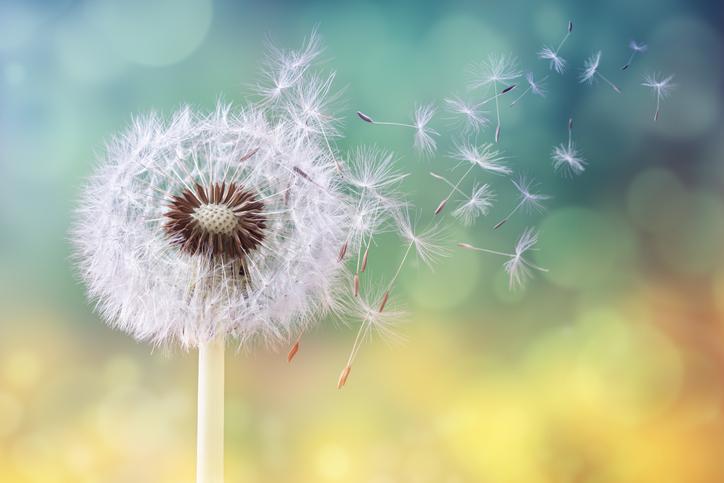
- Health advice
- Nov 12, 2015
1 in 5 Australians suffer from allergies; most suffer from more than 1 allergic condition at the
same time.1
Do your eyes and nose start itching and watering with that first whiff of pollen?
Australia and New Zealand have the highest levels of allergic diseases in the developed world.
Allergies disrupt your life
Allergic disorders lead to impaired quality of life, increased absenteeism from work, reduced productivity at work and a significant financial burden.1- About 20% of Australians have at least one allergic condition.
- On average an allergic person has 1.74 allergies, i.e. most suffer from more than one condition at a time.
- The estimated cost to Australians due to reduced quality of life from allergies is double that of arthritis.
Hayfever the most common allergy
Allergic rhinitis, which we commonly call hay fever, involves the nasal airways becoming inflamed, and is one of the most common allergies in Australia. Here are a handful of factors that might result in its development:1,2- Family history – a child has a 33% greater likelihood of developing nasal allergies if one of their parent’s has an allergy; if both parents have allergies, the likelihood is nearly 70%.
- Early life factors – such as being born premature or with a low birth weight, being bottle-fed, having exposure to tobacco smoke and being born in a high allergen season.
- Allergen exposure – this can range from pollution to house dust, pollens and grasses.
- Age – those aged between 15 and 64 are more likely to experience hay fever.
- Gender – females have a greater likelihood of allergic rhinitis than males.
- Geographic location – in Australia, Western Australia, South Australia and the Northern Territory have the highest allergic rhinitis rates; New South Wales and Queensland have the lowest rates.
Allergies cause other problems
While allergies such as allergic rhinitis may sound like a small inconvenience, they can lead to bigger problems, each of which may impact quality of life, such as:1-3- Disturbed sleep or sleep apnea
- Snoring
- Tiredness
- Headaches
- Trouble concentrating
- Reoccurring ear or sinus infections.
Natural Remedies that may help
If you are not looking forward to spring because of the allergies it brings, here are some natural remedies that might help you give non-stop sneezing the flick. The right mix of herbal medicines and key nutrients may have significant impact on the sometimes debilitating symptoms. Perilla (Perilla frutescens) Perilla is a herb traditionally used for the relief of hay fever and symptoms such as coughing and excessive phlegm.4 What makes perilla so great is its rosmarinic acid content, which might tame the iinflammatory response that leads to allergies. Studies show that perilla may relieve an itchy nose and itchy, watery eyes.5 Rosemary (Rosemarinus officinalis) A potent antioxidant,6 the role of rosemary can extend beyond the kitchen if you take it as a herbal remedy. Antioxidants lessen damage by free radicals, including cigarette smoke, pollution and pesticides, to which allergy sufferers may tend to be sensitive. Rosemary additionally contains the rosmarinic acid, the anti-allergenic compound also in perilla. Albizia (Albizia lebbeck) An ancient Indian Ayurvedic herb, albizia has traditionally been used to help provide relief for allergic conditions such as hay fever and eczema, which involves an itchy skin rash. Research shows albizia may stabilise certain cells that line blood vessels in different areas of the body, including the eyelids and nose.7 Albizia can also help reduce sensitivity, and reduce levels of allergy-inducing antibodies and certain white blood cells (T cells and B cells) involved in the immune response.6 Baical skullcap (Scutellaria baicalensis) Baical skullcap has a long history of use in relieving symptoms f of allergies due to anti-inflammatory and anti-allergic actions.6 Studies show that the flavonoids in baical skullcap help prevent the immune system from having allergic reactions.8 Baical skullcap may also decrease the amount of the chemical histamine, which is released from certain immune cells (‘mast cells’) and results in allergies.6 Quercetin This antioxidant, anti-inflammatory and anti-allergenic nutrient might help keep hay fever at bay thanks to its anti-histamine and anti-inflammatory actions.9 There is plenty of research that shows quercetin helps stabilise mast cells and white blood cells which are involved in producing allergic reactions by our immune system.5,9 Vitamin C (Ascorbic acid) Apart from providing broad spectrum support for our immune systems, vitamin C may play a part in allergy-alleviation, thanks to its anti-histamine action. Low levels of vitamin C have been linked to increased blood histamine levels, which causes allergic symptoms.10 Vitamin D This hormone, which we naturally attain through skin-to-sun exposure, may not be the first that comes to mind for allergy-alleviation, however a vitamin D deficiency has been linked to allergy risk. In a study of more than 3000 children and adolescents, those with low vitamin D levels had an increased likelihood of having sensitivities to 11 out of 17 tested allergens, including environmental allergens.11 These findings support a Harvard University study, which aimed to show that sun exposure may reduce the onset of allergies in children.12 Speak to your healthcare practitioner for more information about allergies and supplementation. Make sure to always read the label and use only as directed. If symptoms persist, see your healthcare practitioner. ‘Ask a Naturopath’ at Mr Vitamins about how to treat your allergies and get relief fastMr Vitamins recommends
Bioceuticals Allergy Care, Quercetain and Ultrapotent C
Bioceuticals is a Practitioner only brand so please 'ask a Naturopath' to help you References- Access Economics. The economic impact of allergic disease in Australia: not to be sneezed at. Australasian Society of Clinical Immunology and Allergy (ASCIA) 2007, http://www.allergy.org.au/images/stories/pospapers/2007_economic_impact_allergies_report_13nov.pdf
- Australian Institute of Health and Welfare. Allergic rhinitis (‘hay fever’) in Australia November 2011. Cat. no. ACM 23. Canberra, http://www.aihw.gov.au/WorkArea/DownloadAsset.aspx?id=10737420519
- Settipane RA. Complications of allergic rhinitis. Allergy Asthma Proc 1999;20(4):209-213.
- Bensky D, Clavey S, Stoger E. Chinese herbal medicine materia medica. 3rd ed. Seattle: Eastland Press, 2004.
- Takano H, Osakabe N, Sanbongi C, et al. Extract of Perilla frutescens enriched for rosmarinic acid, apolyphenolic phytochemical, inhibits seasonal allergic rhinoconjunctivitis in humans. EBM 2004;229:247-254.
- Bone K. A clinical guide to blending liquid herbs. QLD: Churchill Livingstone, 2003.
- Prussin C, Metcalfe DD. 4. IgE, mast cells, basophils, and eosinophils. J Allergy Clin Immunol 2003;111(2 Suppl):S486-494.
- Kimata M, Inagaki N, Nagai H. Effects of luteolin and other flavonoids on IgE-mediated allergic reactions. Planta Med 2000;66(1):25-29.
- Pizzorno JE, Murray MM. Textbook of natural medicine, 2nd Ed. London: Churchill Livingstone,1999.
- Braun L, Cohen M. Herbs & natural supplements: an evidence-based guide, 3rd ed. Sydney: Churchill Livingstone, 2010.
- Sharief S, Jariwala S, Kumar J, et al. Vitamin D levels and food and environmental allergies in the United States: results from the National Health and Nutrition Examination Survey 2005-2006. J Allergy Clin Immunol 2011;127:1195-1202.
- Litonjua AA, Weiss ST. Is vitamin D deficiency to blame for the asthma epidemic? J Allergy Clin Immunol 2007;120(5):1031-1035.






